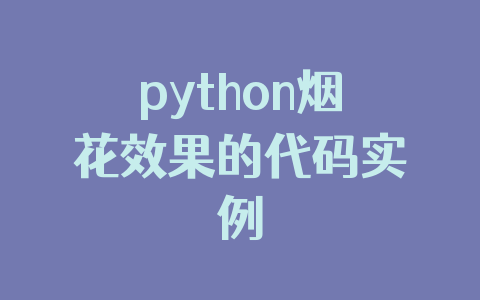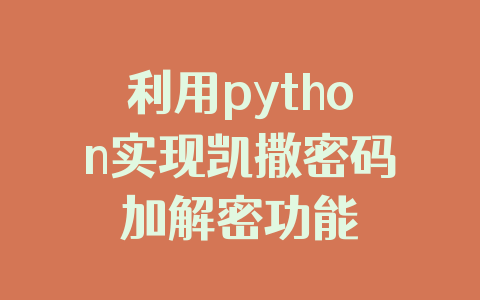1、背景
最近的项目中,再次踩到Python字符串处理的坑,决定把此次解决方案记录一下,以勿踩坑。
2、遇到坑
原本字符串:大坪英利国际8号楼88-88号重庆汉乔科技有限公司大坪英利国际8号楼
去除最左边的字符串:大坪英利国际8号楼
预期结果:88-88号重庆汉乔科技有限公司大坪英利国际8号楼
自然而然,第一个想到的就是lstrip()函数。
Python中lstrip() 方法用于截掉字符串左边的空格或指定字符。
但实际上结果:
lstrip: -88号重庆汉乔科技有限公司大坪英利国际8号楼
3、找到 lstrip() 坑的真相
函数原型:
def lstrip(self, chars=None): # real signature unknown; restored from __doc__ \"\"\" S.lstrip([chars]) -> str Return a copy of the string S with leading whitespace removed. If chars is given and not None, remove characters in chars instead. \"\"\" return \"\"
看来 lstrip 方法是 比对字符 并去除,而不是简单的去除最左边字符串。
那好,再验证一下:
\"重庆重庆师范大学\".lstrip(\"重庆\")
结果:
师范大学
那我想简单的去除字符串中的首个指定字符串,最好不用 lstrip() 了。
于是又想到了split 方法 和 replace 方法……
4、解决方案
4.1、方法1 split
函数原型:
def split(self, instring, maxsplit=_MAX_INT, includeSeparators=False):
\"\"\"
Generator method to split a string using the given expression as a separator.
May be called with optional C{maxsplit} argument, to limit the number of splits;
and the optional C{includeSeparators} argument (default=C{False}), if the separating
matching text should be included in the split results.
Example::
punc = oneOf(list(\".,;:/-!?\"))
print(list(punc.split(\"This, this?, this sentence, is badly punctuated!\")))
prints::
[\'This\', \' this\', \'\', \' this sentence\', \' is badly punctuated\', \'\']
\"\"\"
splits = 0
last = 0
for t,s,e in self.scanString(instring, maxMatches=maxsplit):
yield instring[last:s]
if includeSeparators:
yield t[0]
last = e
yield instring[last:]
4.2、方法2 replace
函数原型:
def replace(self, old, new, count=None): \"\"\" For each element in `self`, return a copy of the string with all occurrences of substring `old` replaced by `new`. See also -------- char.replace \"\"\" return asarray(replace(self, old, new, count))
5、案例
5.1、源代码
# -*- coding: utf-8 -*- \"\"\" Author: ZhenYuSha CreateTime: 2020-2-26 Info: 去除字符串中 首个指定字符串 \"\"\" def run(source, key): tmp_ls = source.lstrip(key) tmp_re = source.replace(key, \"\", 1) tmp_sp = source.split(key, 1)[1] return tmp_ls, tmp_re, tmp_sp if __name__ == \'__main__\': tmp_1, tmp_2, tmp_3 = run(\"大坪英利国际8号楼88-88号重庆汉乔科技有限公司大坪英利国际8号楼\", \"大坪英利国际8号楼\") print(\"test_1 lstrip:\", tmp_1) print(\"test_1 replace:\", tmp_2) print(\"test_1 split:\", tmp_3) tmp_1, tmp_2, tmp_3 = run(\"重庆重庆师范大学\", \"重庆\") print(\"test_2 lstrip:\", tmp_1) print(\"test_2 replace:\", tmp_2) print(\"test_2 split:\", tmp_3)
5.2、效果
6、延伸
split 和 replace 可以解决字符串首个指定字符串去除问题, 但去除字符串这个问题不仅仅是去除就完了,还要去判断是否符合我们的要求。
6.1、看字符串开头是否是指定字符串
如果需要以指定字符串开头,要用 startswith 函数来判断。
6.2、看字符串中是否存在指定字符串
如果不存在指定字符串,直接用 split 和 replace 会直接崩溃的,那就需要 find 函数来查看了。
到此这篇关于Python 去除字符串中指定字符串的文章就介绍到这了,更多相关Python 去除字符串 内容请搜索自学编程网以前的文章或继续浏览下面的相关文章希望大家以后多多支持自学编程网!













